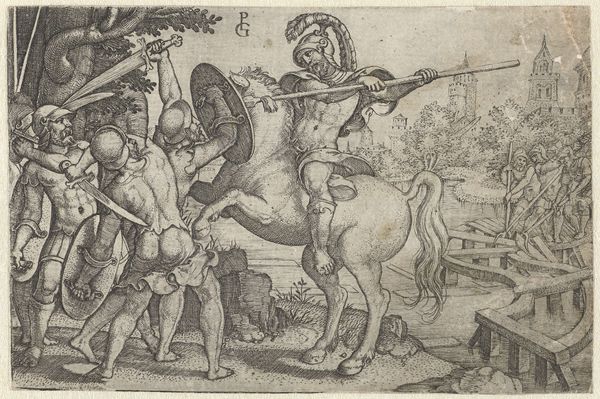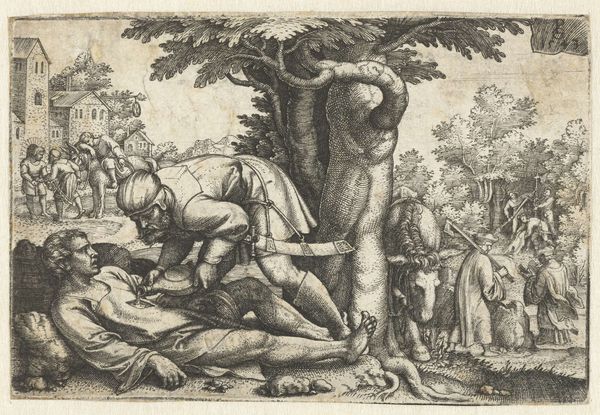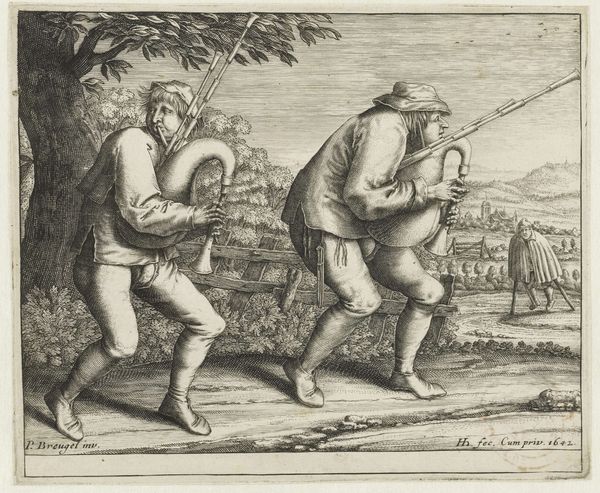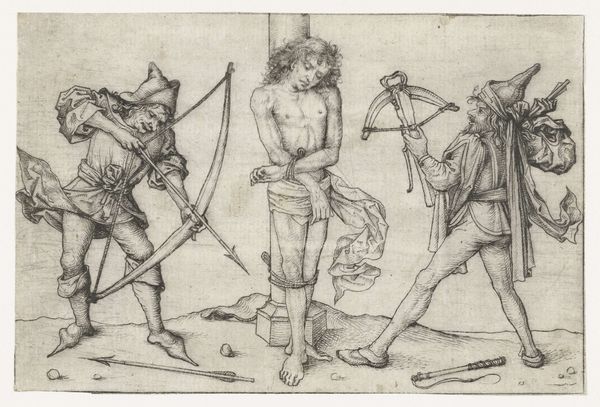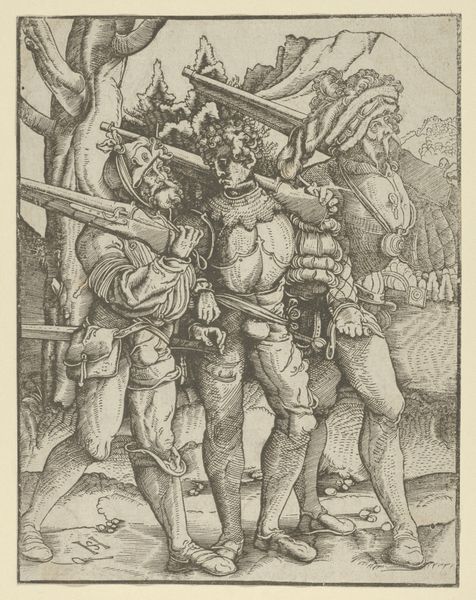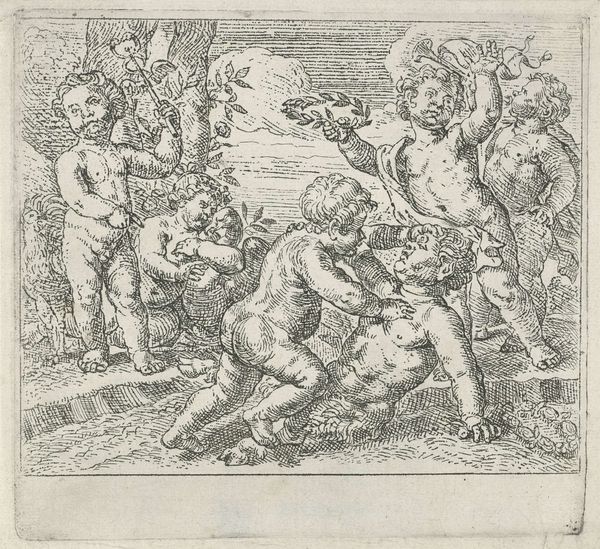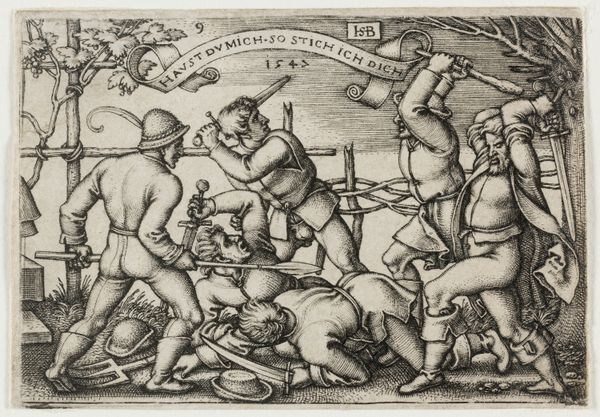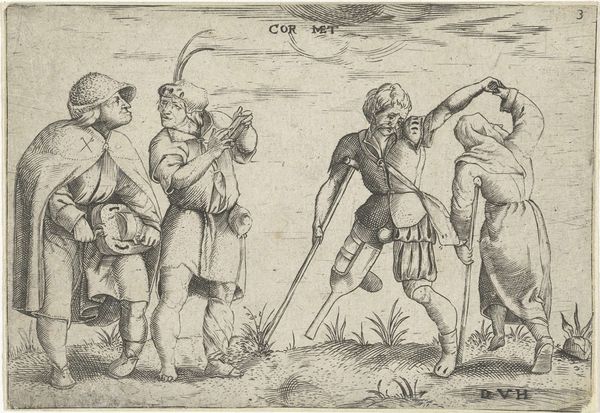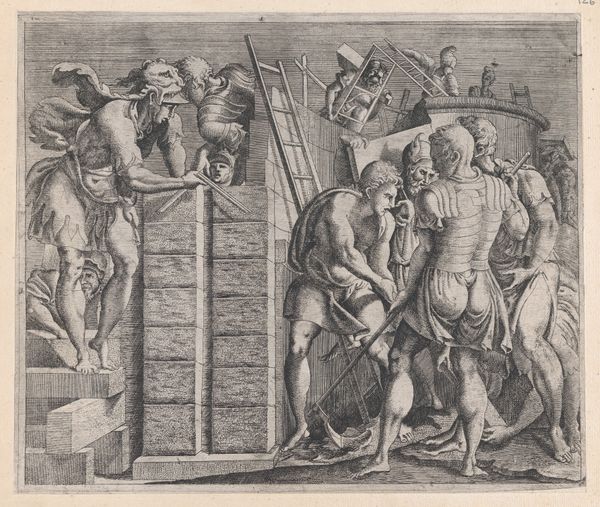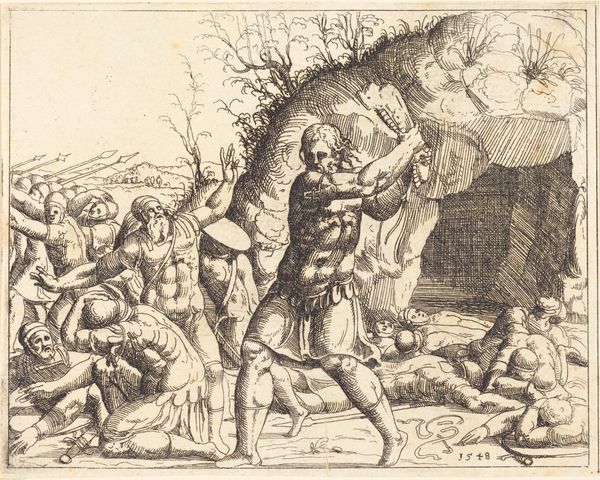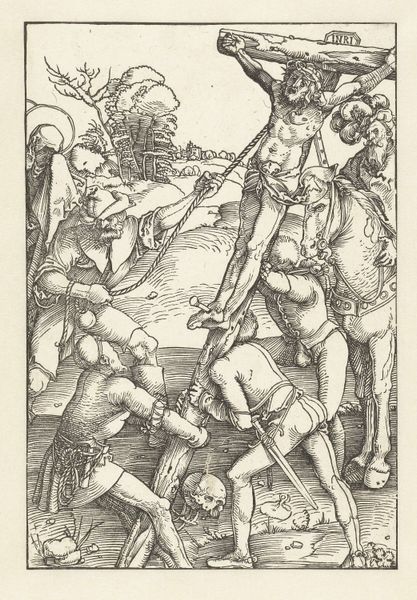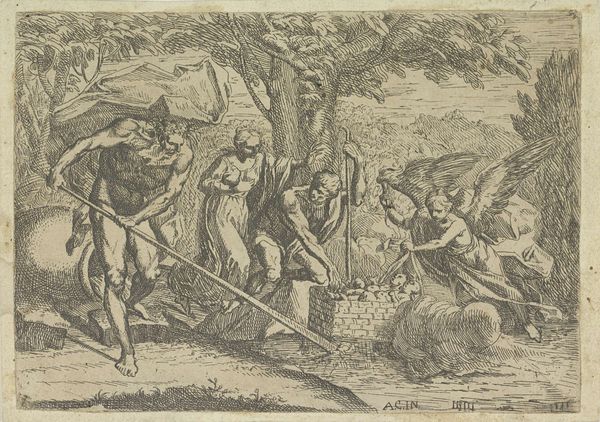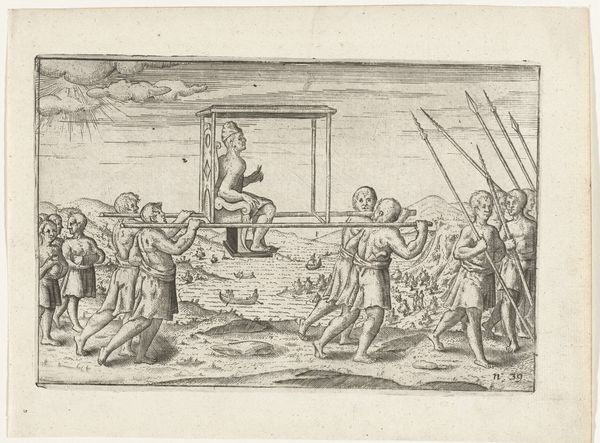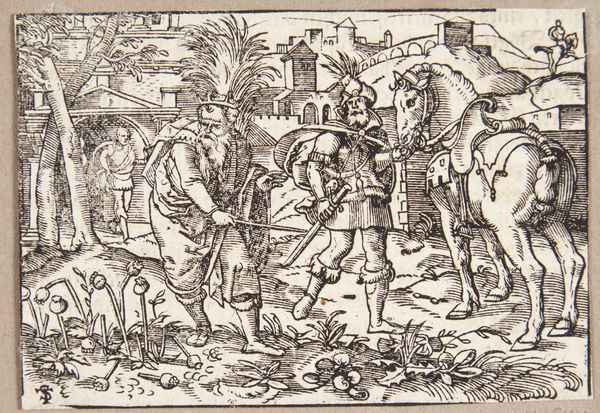
Dimensions: height 122 mm, width 156 mm
Copyright: Rijks Museum: Open Domain
Editor: This is “The Four Soldiers,” an engraving made around 1500 by the artist known as Monogrammist MZ. There's an energy to it; the soldiers seem caught mid-stride, almost tumbling forward. What stands out to you about this work? Curator: I'm drawn to how the artist grapples with the representation of masculinity and military power in a period of immense social upheaval. Remember, the early 16th century witnessed not only the Renaissance blooming, but also constant wars and power struggles, the rise of mercenaries, and new forms of centralised authority. Do you notice anything about their clothing or weapons? Editor: Yes, there’s a mix of armour and what looks like civilian clothing. Some have swords, while others carry pikes or drums. Curator: Precisely. It is unlikely that the men are 'soldiers' as we would think of them today. The artist seems interested in challenging a singular, heroic vision of soldiery. By showing this varied group, they critique power and social class through their attire. Also, note that a lot of printmaking at this time served the function of 'news media' because literacy was restricted. Do you see any clues of a social critique by the artist? Editor: I see. So maybe it’s not a straightforward glorification of war, but more a commentary on its messy reality, with diverse participants and motivations. Curator: Exactly. And think about who could afford art back then, it would have mostly been wealthy patrons commissioning artworks. This challenges the narrative we may construct when assessing this engraving today, 500 years later. It might be about interrogating the very fabric of early modern society, using art as a medium for discourse, prompting viewers to question assumptions about strength, order, and hierarchy. Editor: I hadn't considered all of those social and political angles. Thanks for providing a completely fresh perspective on "The Four Soldiers!" Curator: My pleasure. Looking closely is the key, and keeping that social and historical awareness helps to build it.
Comments
No comments
Be the first to comment and join the conversation on the ultimate creative platform.
